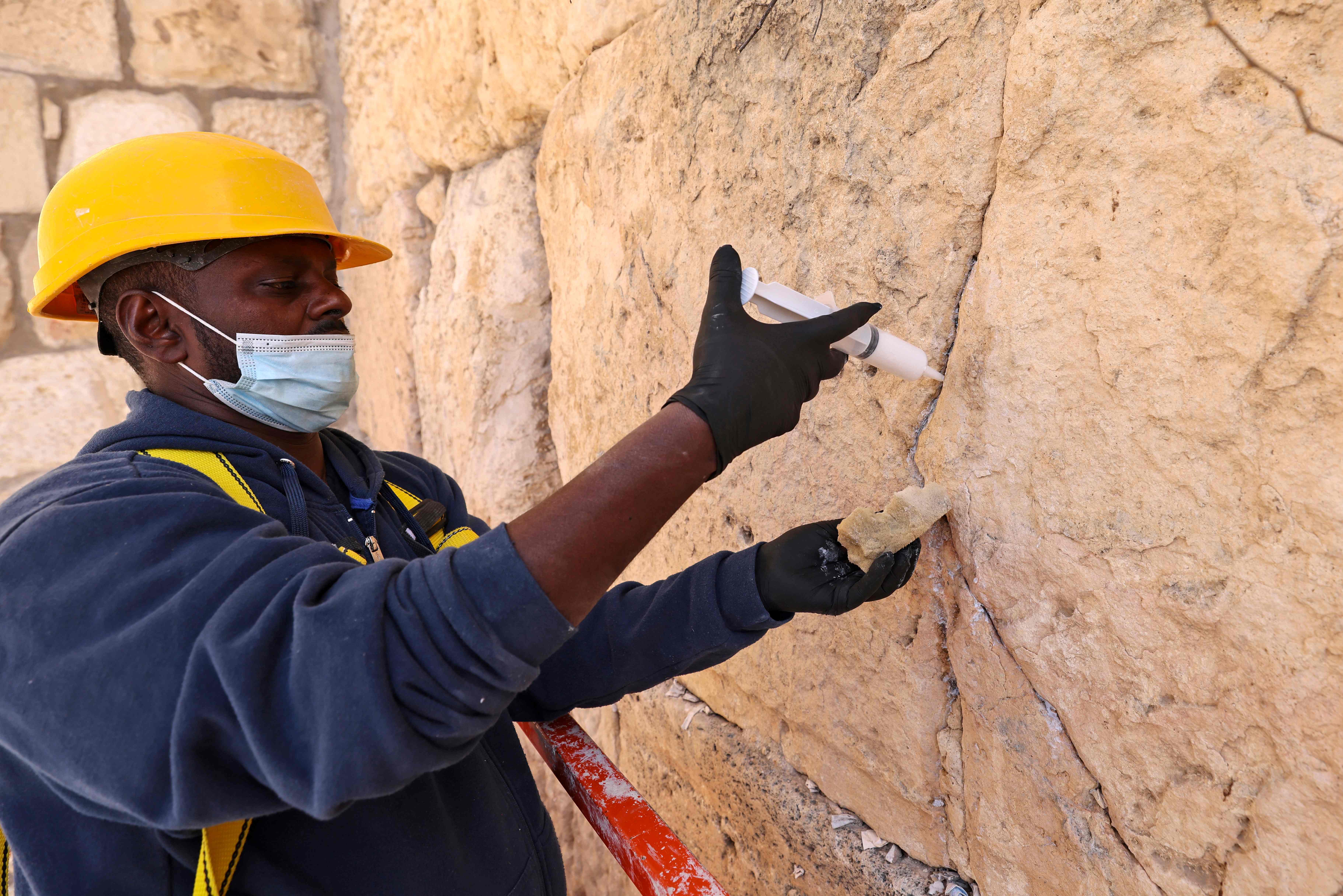Jersualem’s Western Wall to get a facelift
Ancient stones show scars from more than two thousand years of scorching sunlight and torrential rain

Your support helps us to tell the story
From reproductive rights to climate change to Big Tech, The Independent is on the ground when the story is developing. Whether it's investigating the financials of Elon Musk's pro-Trump PAC or producing our latest documentary, 'The A Word', which shines a light on the American women fighting for reproductive rights, we know how important it is to parse out the facts from the messaging.
At such a critical moment in US history, we need reporters on the ground. Your donation allows us to keep sending journalists to speak to both sides of the story.
The Independent is trusted by Americans across the entire political spectrum. And unlike many other quality news outlets, we choose not to lock Americans out of our reporting and analysis with paywalls. We believe quality journalism should be available to everyone, paid for by those who can afford it.
Your support makes all the difference.Jerusalem’s Western Wall is getting a face lift after two millennia of wear and tear.
The ancient stones are showing the scars from more than two thousand years of scorching sunlight and torrential rain.
Israeli conservationists have begun mending the cracks and filling out the battered surfaces of the stones that are the most in need.
The Western Wall, the holiest prayer site in Judaism, is an outer remnant of the second of two Jewish temples built by Herod the Great more than 2,000 years ago and destroyed by the Romans in 70AD.
It sits in Jerusalem’s old city, next to a sacred compound revered by Jews as the Temple Mount and Muslims as the Noble Sanctuary, and lies a short walk away from Christianity’s Church of the Holy Sepulchre.
Huge crowds gather at the wall to pray and visitors often stuff notes in cracks between the stones.
The Israel Antiquities Authority (IAA) tracks the condition of each stone and has begun treating the surface of those which show the most wear.
Using a portable lift and a medical syringe, the team delicately injects a limestone-based grout into the gaps and fissures in the stones.
"It is the best possible method of healing the stones and the ultimate defence against weathering," Yossi Vaknin, head conservator for the IAA at the Western Wall, told Reuters.
And it is not just the climate that has taken a toll, he said. Plants have taken root and birds nest in the wall, making the repair work even more necessary.
Additional reporting by Reuters

Join our commenting forum
Join thought-provoking conversations, follow other Independent readers and see their replies
Comments